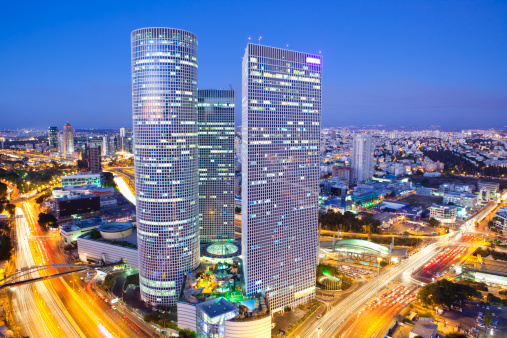Tel Aviv (Hebrew: תל אביב) was founded on April 11, 1909.
The time was at a peak wave of Jewish immigration – the Second Alyia. Neighborhoods in the ancient port city of Yafo were becoming overpopulated and crowded.
The true development of Tel Aviv took off with the arrival of Scottish urban planner, Sir Patrick Geddes. In response to the unplanned expansion of the city, Geddes was invited by the municipality in 1925 to present a comprehensive master plan for Tel Aviv. In his vision, Tel Aviv was to be a garden city, as foreseen by its founders.
The city was again transformed starting in 1932 by a massive wave of immigration of Jews. In 1934, in the midst of this wave (the Fifth Aliya), Tel Aviv was declared a city, and Meir Dizengoff, the president of its council, as its first mayor.
In the 1930s, Tel Aviv became the country’s largest economic center and had the highest concentration of social and cultural institutions. Tel Aviv was the center of the emergence of Hebrew culture and culture in Hebrew – and remains so to this very day. Tel Aviv became known for its modern cafes, hotels, concert halls and nightclubs.
At the start of the 1948 War of Independence, the city and its periphery became the focal point of the conflict between Jews and Arabs. The fight over Yafo’s future started immediately after the UN decision for partition. In April 1950, Yafo was formally merged with the Tel Aviv municipality and the unified city of Tel Aviv-Yafo was established.
The ’80s brought about a shift in attitude and living in Tel Aviv-Yafo once again became the object of the young, sophisticated and educated generation.

Tel Aviv-Yafo of today has developed a unique style combining the best of both a relaxed Mediterranean seaside town with an edgy urban vibe.
Credits:
tel-aviv.gov.il







 Available on WhatsApp
Available on WhatsApp
Join the conversation (No comments yet)